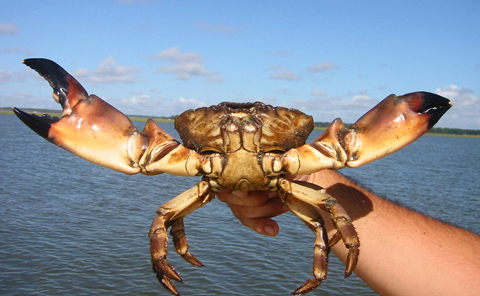Sweat. Succulent. Meaty. Delicious. Sustainable. The Stone crab is a dream for seafood lovers, as anyone who’s ever been equipped with a clawbreaker and some mustard sauce dip (mustard with mayonnaise or sour cream, and add-ins like parsley flakes, Worcestershire or A-1 Sauce, and salt and pepper; more adventurous chefs sauté the meat from stone crab claws in a hot dip made from orange marmalade, lime juice, soy sauce, garlic, butter, and curry powder) at Joe’s on South Beach can attest. And as of today the 2008-2009 commercial and recreational harvest season for stone crab claws in Florida is open (until mid-May). The waters off the Florida Keys are Florida’s top source of the claws. About 40 percent of the state’s average annual harvest of more than 3.1 million pounds comes from Keys waters, according to the Florida Fish and Wildlife Conservation Commission. One of the South Florida’s tastiest and most unique gastronomic treats, stone crab claws are large and meaty-closer in size to a 2-pound Maine lobster’s claws than a blue crab’s claws. Stone crab claws (the propodus) must be at least 2.75 inches in length to be harvested legally, and claws may not be taken from egg-bearing female stone crabs. Recreational harvesters are allowed to use up to five stone crab traps, and there is a daily bag limit of 1 gallon of claws per person or 2 gallons per vessel, whichever is less. When its claws are removed correctly, the crab will regenerate legal-size claws in about three years, according to the Florida Wildlife Conservation Commission. A very large crab can regenerate a legal-size claw in about one year.





















